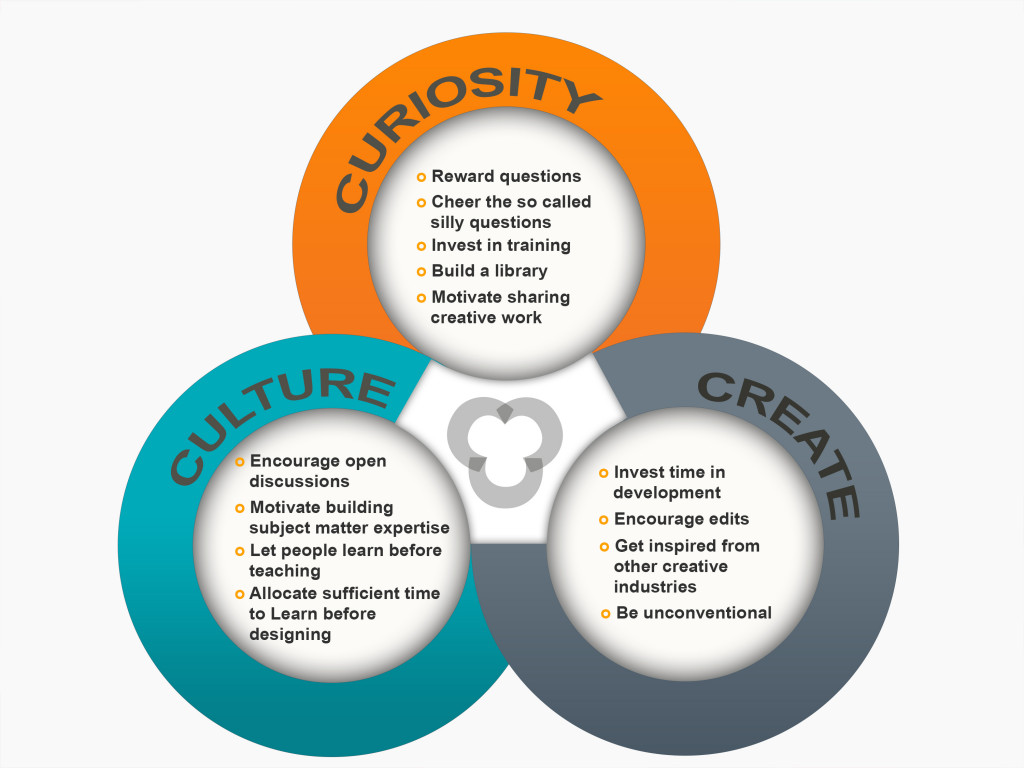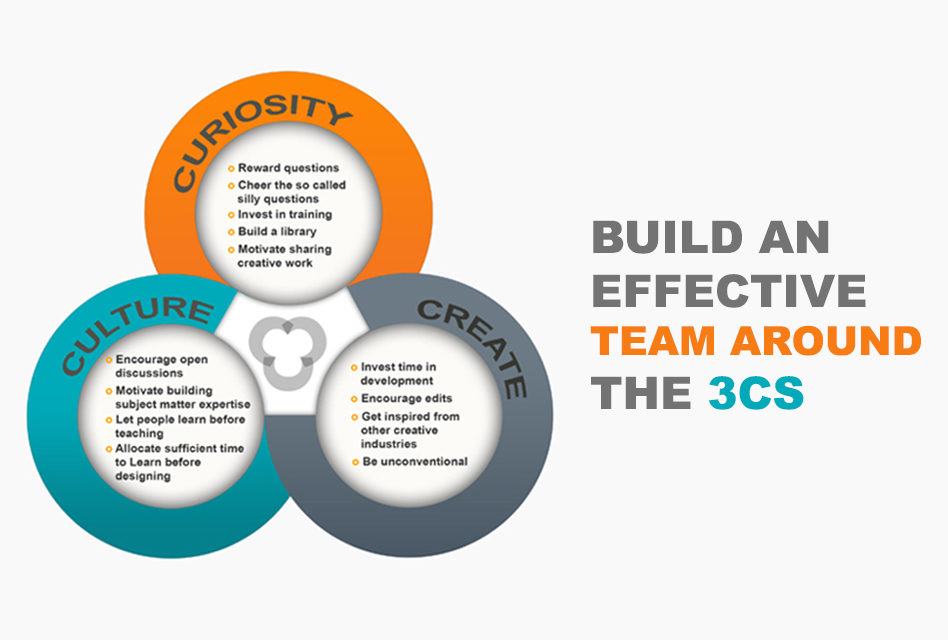Everything is easier said than done. Wanting something is easy. Saying something is easy. The challenge and reward are in the doing. ~ Steve Maraboli
Why is creating a training course easier said than done?
This is because the process of Instructional Design includes a plethora of jobs that need to be juggled simultaneously.
With each training, Instructional Designers have to continually manage topic ideation, content research, effective application of learning theories, projects, and client and business needs. Tasks related to these items are necessary, but they can make course design and development overwhelming. And, it doesn’t end there! Even after the courses are developed, Instructional Designers need to constantly evaluate whether those courses meet learner expectations and achieve the outlined objectives. Every designer wants to create memorable experiences for their learners, but in reality, sadly, most get weighed down by the mechanisms of the process and their energies are depleted dealing with the ordinary before they can even touch the periphery of the extraordinary.
So, how to bridge this gap?
“Simple can be harder than complex.” ~ Steve Jobs
Well, the onus lies on the Manager to ensure that the Instructional Designer’s Job is simplified. They need to cut the clutter and the unnecessary by removing redundancies in processes, templates, and deliverables to ensure that Instructional Designers do their job, effectively. Their job is to nurture, motivate, and support the designers. This is not easy, but following the three simple principles around Curiosity, Culture, and Creation can make a stark difference in how you manage the team and how they deliver courses:
- Curiosity: Encourage Instructional Designers to be curious about the course topic
- Culture: Motivate the team to exchange ideas and stimulate learning
- Create: Support them in trying out unconventional and creative techniques
These three principles are the three C’s of Instructional Design for facilitating your team to develop highly effective trainings.
Curiosity is the wick in the candle of learning. ~ William Arthur Ward
Curiosity
Curiosity is one of the most important abilities to be nurtured amongst course developers. Mainly because you cannot teach without knowing; and you cannot know without learning; and there can be no learning without the spark of curiosity.
Course developers must be curious to learn more about the topic on which they are developing a course. They need to question and interview SMEs and Managers, or do research on the Internet. As Managers or Leaders in your enterprise, you should:
- Encourage questions
- Feed the curiosity of your team by providing sufficient training, books, references, and material, and
- Facilitate discussions
Culture is the process by which a person becomes all that they were created capable of being. ~ Thomas Carlyle
Culture
Your Instructional Designers will not ask questions unless you develop a culture that encourages them to be curious and learn. To foster a culture that rewards curiosity, encourage course developers to participate in open-house discussions, where they can present their ideas and invite suggestions. This will transform the passive audience mindset to that of active engagement. In addition, the confidence that comes from self-expression and being heard and respected in a forum can also boost motivation levels of your developers and spur them on to dig deeper into their research to finally emerge as Subject Matter Experts (SMEs) in their chosen topics.
To achieve this, managers should provide adequate incentives to reward the learning process. It shouldn’t be a quick phase where hoards of information is merely collected and chunked; sufficient time needs to be given to internalize that information. A true test of how well you’ve grasped something, is whether you can strip it down to its most simplified form and easily explain it to a child. Once you can do that, course creation will whiz through to completion!
The best training program in the world is absolutely worthless without the will to execute it properly, consistently, and with intensity. ~ John Romaniello
Create
Rome was not built in a day, that is to say, anything worthwhile takes time to create. Hours and days of developing, editing and re-writing of content are invested in creating effective trainings. Development time needs to be measured for sure, but providing sufficient amount of time in the development effort is the key. Ensure that the development ratios have enough buffer to accommodate revisions and edits required to deliver quality. Even though there are tried and tested guides for the ID process, in reality, creativity does not follow a linear pattern. So, do not insist on having your designers follow a rigid process. Rather, use the rules as a general guide, but encourage them to break the mold and try new or unconventional concepts during course creation. This helps to maintain a perennial learning environment and, in turn, aids in fostering an atmosphere of curiosity. Additionally, develop a Culture to ensure that your team shares and accepts feedback in a constructive manner.
Today, training is imperative to ensure success. And, Instructional Designers cannot develop good training if they are not motivated, through curiosity, to learn. So, encouraging Curiosity, cultivating the right Culture, to Create courses in the right environment is the key to building an effective Instructional Design team.
As we look ahead into the next century, leaders will be those who empower others. ~ Bill Gates






